
| Dark-grey Carpet (one synonym : Oesymna stipataria Walker, 1869) EUPITHECIINI, LARENTIINAE, GEOMETRIDAE, GEOMETROIDEA | (donherbisonevans@yahoo.com) and Stella Crossley |
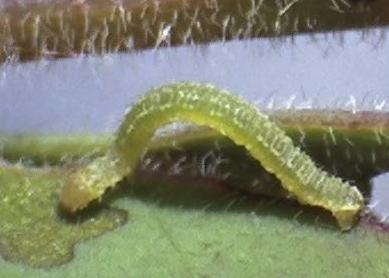
early instar
(Photo: courtesy of Steve Williams,
Moths of Victoria: Part 3)

| Dark-grey Carpet (one synonym : Oesymna stipataria Walker, 1869) EUPITHECIINI, LARENTIINAE, GEOMETRIDAE, GEOMETROIDEA | (donherbisonevans@yahoo.com) and Stella Crossley |

early instar
(Photo: courtesy of Steve Williams,
Moths of Victoria: Part 3)
This caterpillar is initially green with a pair of pale lines along the back, a pale brown head, and a pair of pale blunt horns on the tail. The body has a corrugated look.

Later instars develop a pair of rusty-brown lines along the back, and single white-edged rusty-brown line along each side. The caterpillars are missing three pairs of prolegs, so walk in a looper fashion.
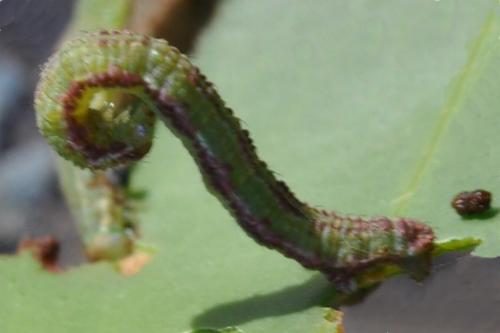
When threatened: the caterpillars stand up on their last pairs of legs, and curl their head under the thorax. The caterpillar feeds on a variety of Wattles (MIMOSACEAE) including
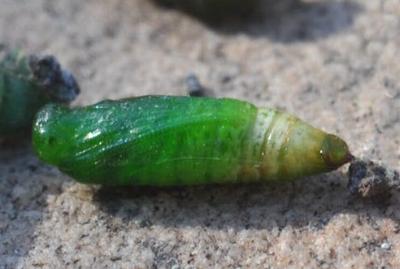
The caterpillar pupates after about four weeks in summer in Melbourne. The pupa initially is green with a pale abdomen. Later it turns brown.
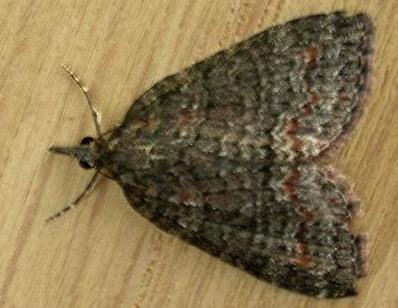
The adult moth is grey or brown with light and dark wriggly lines including a few orange marks on the forewings. The hindwings are pale grey or brown, with a vague darker marginal band.
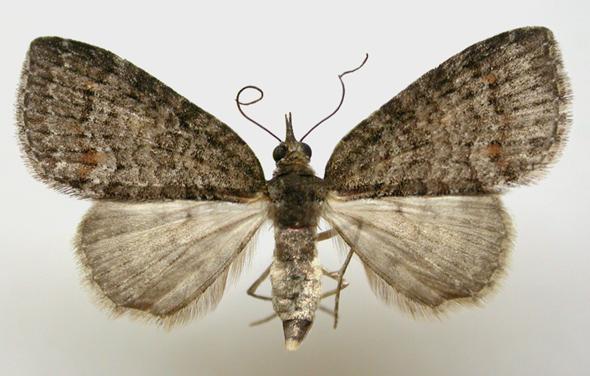
Additionally the male has a brown elliptical patch on each hindwing. The forewings each have a convex costa at the base, and the hindwings are very rounded. The male moths have a wing span of about 1,7 cms. The female moths have a wing span of about 2 cms.
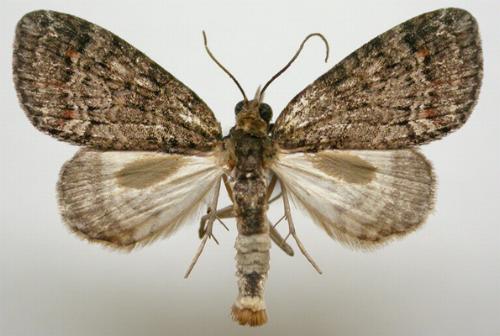
The eggs are ellipsoidal and brown, and laid singly.
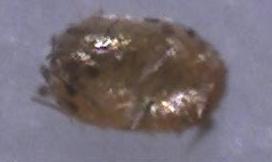
The species occurs in
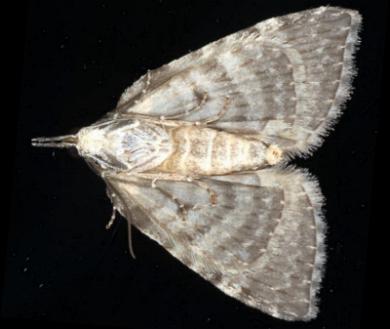
Further reading:
Achille Guenée,
Uranides et Phalénites,
in Boisduval & Guenée:
Histoire naturelle des insectes; spécies général des lépidoptères,
Volume 9, Part 10 (1857), p. 298, No. 1387.
Peter B. McQuillan, Jan A. Forrest, David Keane, & Roger Grund,
Caterpillars, moths, and their plants of Southern Australia,
Butterfly Conservation South Australia Inc., Adelaide (2019), p. 110.
Peter Marriott,
Moths of Victoria: Part 3,
Waves & Carpets - GEOMETROIDEA (C),
Entomological Society of Victoria, 2011, pp. 30-31.
 caterpillar |  butterflies |  Lepidoptera |  moths |  caterpillar |
(updated 13 September 2013, 16 May 2023)